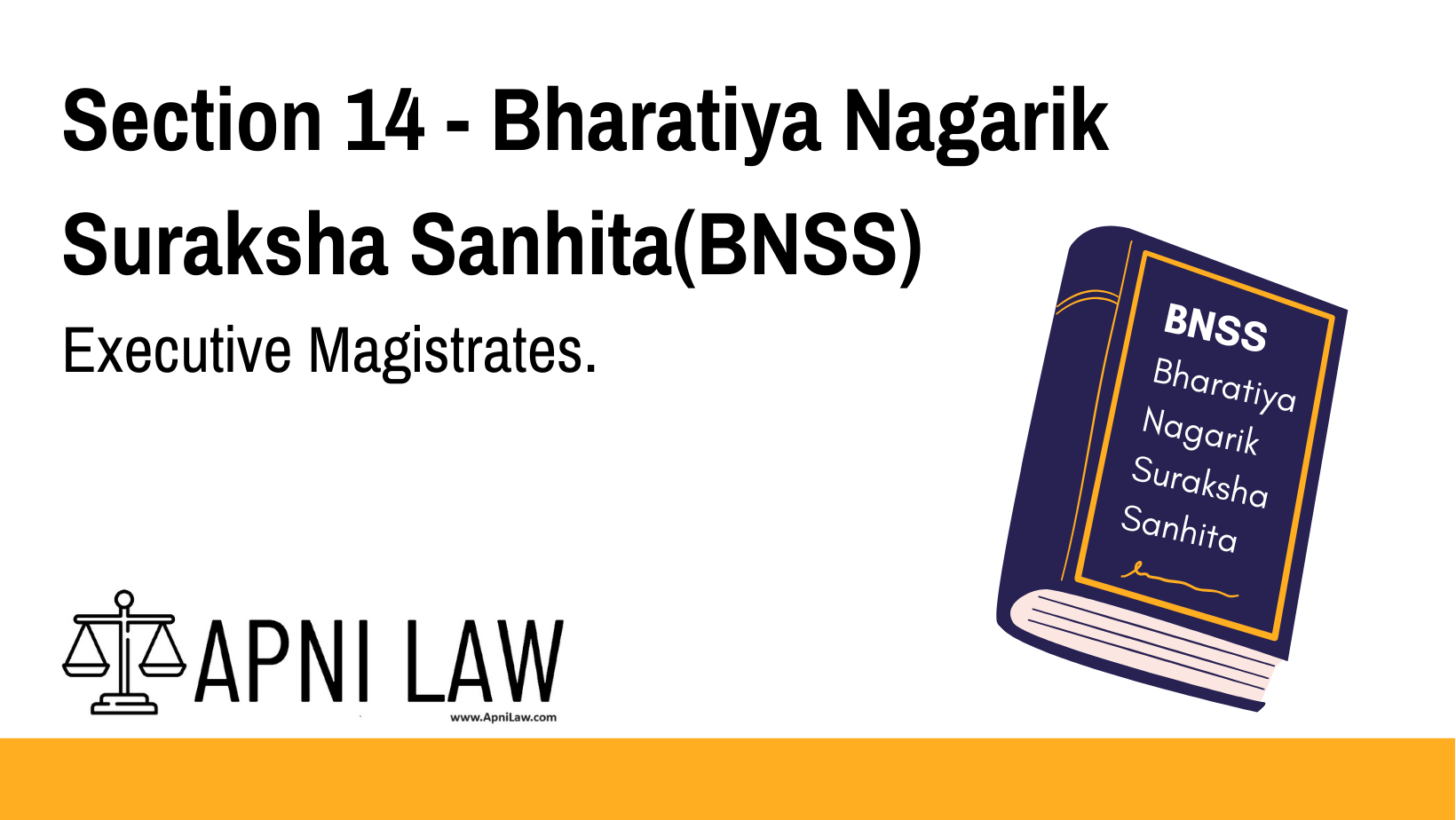BNSS Code 14: Executive Magistrates
Code:
(1) In every district, the State Government may appoint as many persons as it thinks fit to be Executive Magistrates and shall appoint one of them to be the District Magistrate.
(2) The State Government may appoint any Executive Magistrate to be an Additional District Magistrate, and such Magistrate shall have such of the powers of a District Magistrate under this Sanhita or under any other law for the time being in force as may be directed by the State Government.
(3) Whenever, in consequence of the office of a District Magistrate becoming vacant, any officer succeeds temporarily to the executive administration of the district, such officer shall, pending the orders of the State Government, exercise all the powers and perform all the duties respectively conferred and imposed by this Sanhita on the District Magistrate.
(4) The State Government may place an Executive Magistrate in charge of a sub-division and may relieve him of the charge as occasion requires; and the Magistrate so placed in charge of a sub-division shall be called the Sub-divisional Magistrate.
(5) The State Government may, by general or special order and subject to such control and directions as it may deem fit to impose, delegate its powers under sub-section (4) to the District Magistrate.
(6) Nothing in this section shall preclude the State Government from conferring, under any law for the time being in force, on a Commissioner of Police all or any of the powers of an Executive Magistrate.
Explanation:
This section of the BNSS code outlines the appointment and powers of Executive Magistrates within a district. It establishes the hierarchy of magistrates, from District Magistrate to Sub-divisional Magistrates, and defines their roles and responsibilities.
- District Magistrate: The highest authority in a district, responsible for overall law and order, disaster management, and various other executive functions. Appointed by the State Government.
- Additional District Magistrate: Appointed by the State Government to assist the District Magistrate. It is through specific tasks and responsibilities, possessing delegated powers.
- Sub-divisional Magistrate: An Executive Magistrate in charge of a sub-division within a district. He/she is appointed by the State Government with specific powers and duties.
Illustration:
Imagine a situation where a riot breaks out in a certain area of a district. The Sub-divisional Magistrate, responsible for the area, would initially take charge of the situation. This is by using their delegated powers under the BNSS to maintain law and order. If the situation escalates, they might request assistance from the District Magistrate or Additional District Magistrate, who have broader powers. Ultimately, the District Magistrate is responsible for overseeing the situation and ensuring peace is restored.
Common Question & Answers: on Executive Magistrates
Q: Who appoints Executive Magistrates?
A: The State Government appoints Executive Magistrates.
Q: Can an Executive Magistrate become a District Magistrate?
A: Yes, the State Government may appoint an Executive Magistrate as a District Magistrate.
Q: Can a Commissioner of Police have the powers of an Executive Magistrate?
A: Yes, the State Government can confer any or all powers of an Executive Magistrate on a Commissioner of Police. It is under relevant laws.









